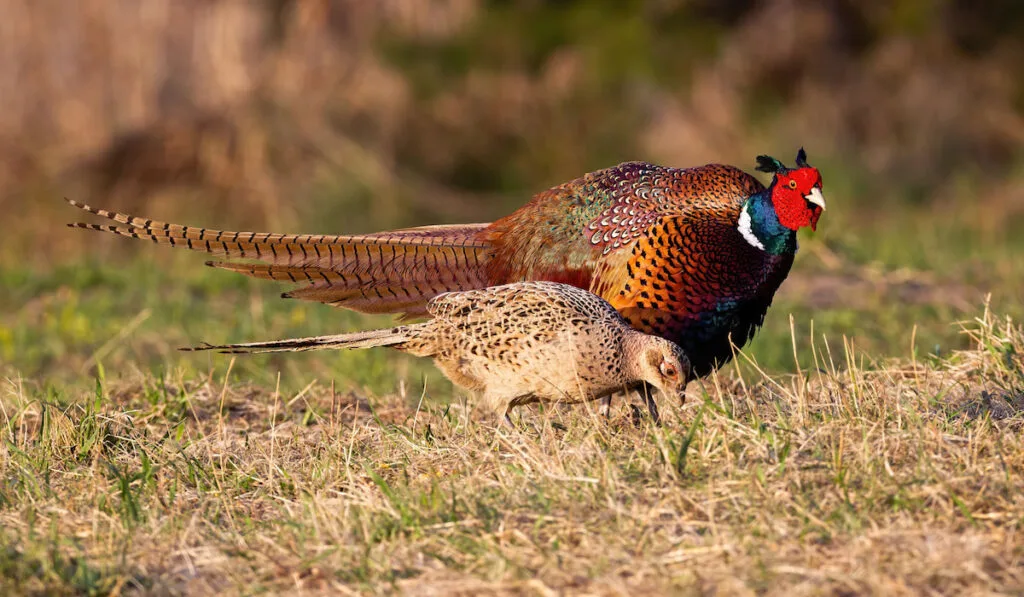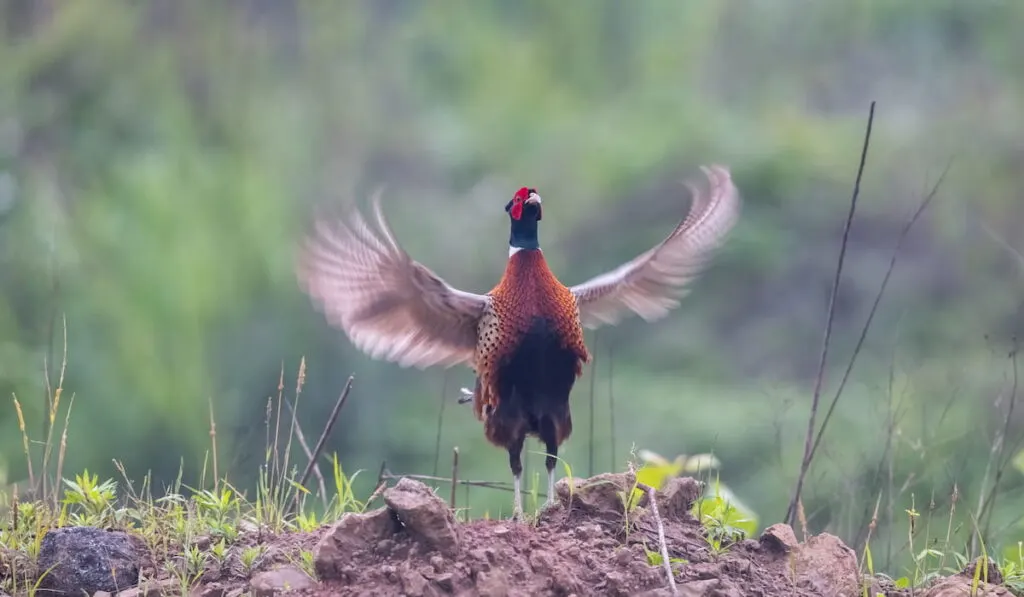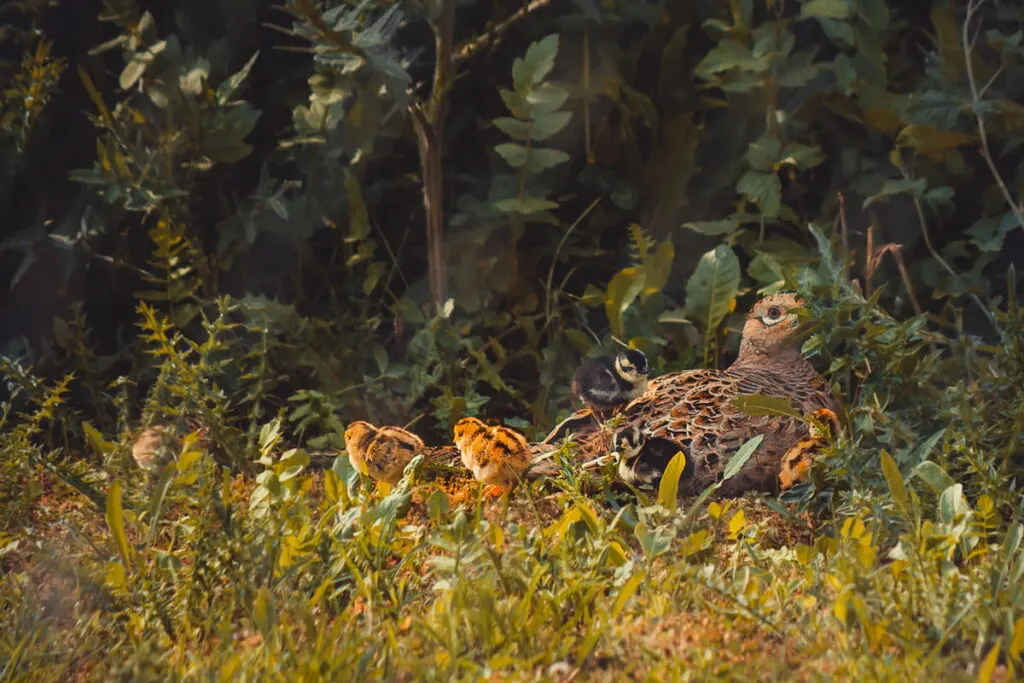Thousands of families across the country try their hand at raising chickens every year. It’s a fun activity that, when done right, can be a fulfilling experience for children and adults alike.
You can raise them as household pets, for eggs, and for several other reasons. They help teach kids responsibility and are a great hobby to keep everyone busy.
Raising pheasants, on the other hand, is much more niche. These beautiful game birds share some similarities with chickens but are very different in other ways.
The pheasant crow, for example, is distinct and awesome to hear. It is a two-syllable crow that can be prompted by loud noises or vibrations.

If you’re thinking about raising pheasants, you’re in for a treat. These lovely animals are a great addition to any home, ranch, or farm. Here are some fun pheasant facts you should know before you give raising them a try.
Table of Contents
The Pheasant Crow
A good way to describe a pheasant crow is that it sounds like a chicken rooster’s crow cut short.
It starts with a low sound on the first syllable and then rises sharply on the second syllable. If you want to know exactly what it sounds like, there are video clips online that you can watch.
Pheasants crow as a way to show anyone or anything else around that they are on their territory. Like chickens, they also crow at dawn and dusk.
They also crow when they are feeling nervous or anxious. During thunderstorms, you will probably hear your pheasants crowing after the loud boom of a lightning strike. They’ve also been known to crow a lot just before an earthquake.
Fun Pheasant Fact 1 – They Can Live Up to 18 Years in Captivity
One interesting fact about pheasants is how different their lifespans are in the wild versus captivity. Wild pheasants only live anywhere from 1-3 years, on average.
That’s due in large part to the number of natural predators that love getting their claws on pheasants.
In captivity, however, they can live much, much longer. Some captive pheasants live up to 18 years old. If they have a good habitat with plenty of shrubs and natural feed, they will live a long, full life.
Fun Pheasant Fact 2 – Pheasants Are Fast!
One thing new owners are surprised to discover is just how fast their pheasants are. We’ve seen videos online of people chasing and grabbing chickens.
All we can say is, good luck trying that on a pheasant! Evolution has been kind to these birds in the speed department.
Pheasants can run up to 10 miles per hour. That helps them get away from any predators on the ground. They usually make their way into tall grass and shrubs where they can hide.
In the air, pheasants can fly up to 35 mph. They can swim as well!

Fun Pheasant Fact 3 – They Are Not Migratory Birds
Even though pheasants tend to be small in stature, they are still very hearty birds. In fact, pheasants don’t fly south during the winter in search of warmer climates. They stay put and develop enough down to withstand colder temperatures.
They group together where they roost to stay warm when it gets particularly cold outside. That’s good news for prospective owners who live in places where it snows.
In the wild pheasants can also go for days at a time without eating, which makes them do especially well in the winter seasons.
Fun Pheasant Fact 4 – They Love to Be In Large Groups
Pheasants, like chickens, are social animals. They love to be around other birds, and male pheasants love to be around several female birds, though some flocks are mixed with multiple male pheasants.
The flock size varies depending on what time of year it is. They are typically largest in the fall when they can gather in groups of up to 50 birds.
As long as there is enough food and cover to support the group, they’ll remain tightly-knit together.
Fun Pheasant Fact 5 – Pheasants Lay Eggs During a Specific Breeding Seasons
One way in which pheasants and chickens differ is how they lay eggs. Most chicken hens can lay eggs all year. Many families visit their coops every day expecting to see multiple eggs.
However, pheasants only lay eggs during a specific breeding season in the spring and summer each year.
Usually, a female pheasant will lay a few dozen eggs over a few weeks or months each year.
Fun Pheasant Fact 6 – Male Pheasants Are More Brightly Colored
Like many other birds, male pheasants have more distinct coloring and patterns than their female counterparts.
Depending on the breed of pheasant, you’ll see rings of bright red, gold, and other colors on the head with speckles of unique coloring on the wings and body of male pheasants.
Female pheasants tend to be more uniform in color and patterning designed to keep them well-camouflaged.

Fun Pheasant Fact 7 – Baby Pheasants Stay Close to Their Mothers
Baby pheasants, once they hatch, catch on quickly to things like feeding and running around.
They do, however, love to stay close to mom for around 80 days before they feel comfortable finally venturing out on their own. Baby pheasants will resemble a full-grown adult at around 16 weeks of life.
These are just some of the many fun facts about pheasants. Raising these interesting game birds can be a ton of fun for any family or farmer.
Done right, raising pheasants can be an interesting activity full of color and positive interactions.
Before you buy hatchlings for the first time, do some research on how to successfully raise baby pheasants to make sure they survive the critical first weeks of life.
You need to do things like get the temperature exactly right, as well as make sure they have the right feed and appropriate space to roam so they feel comfortable.
